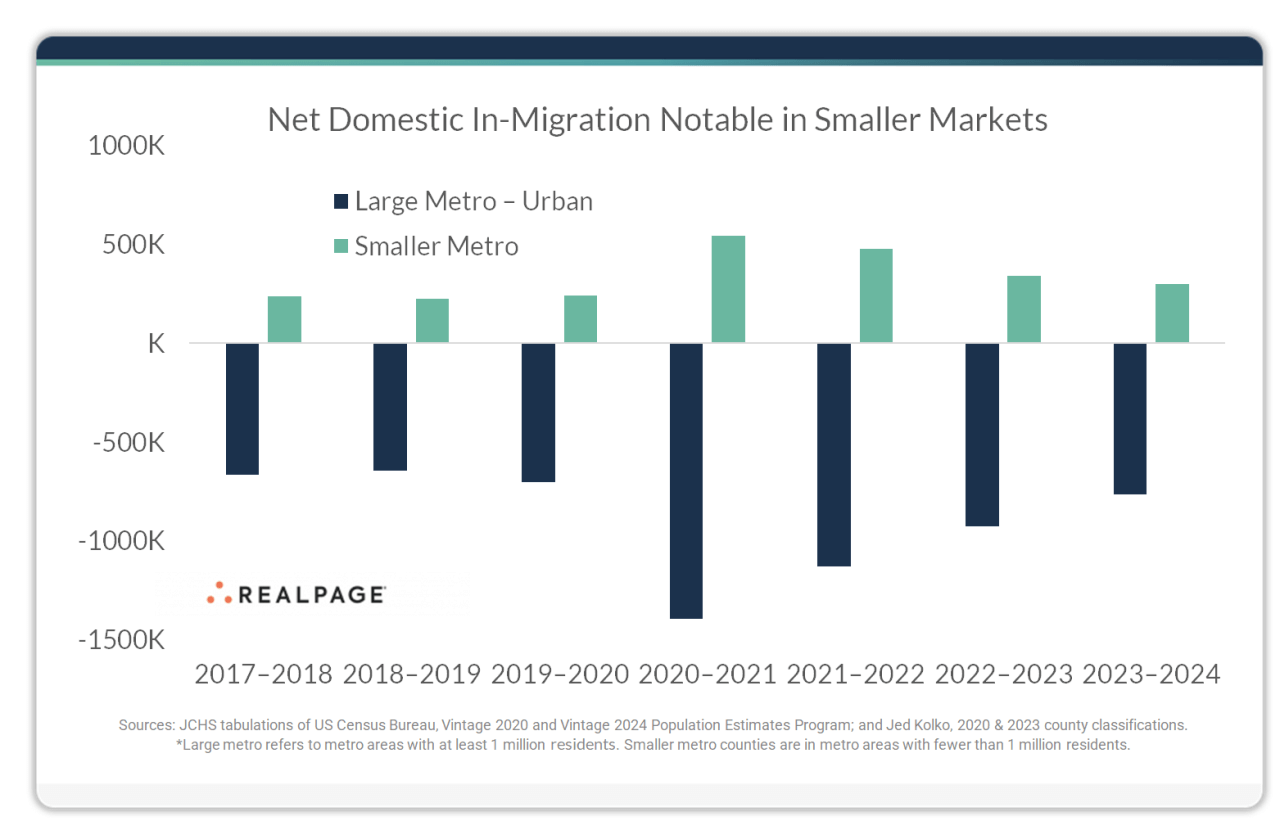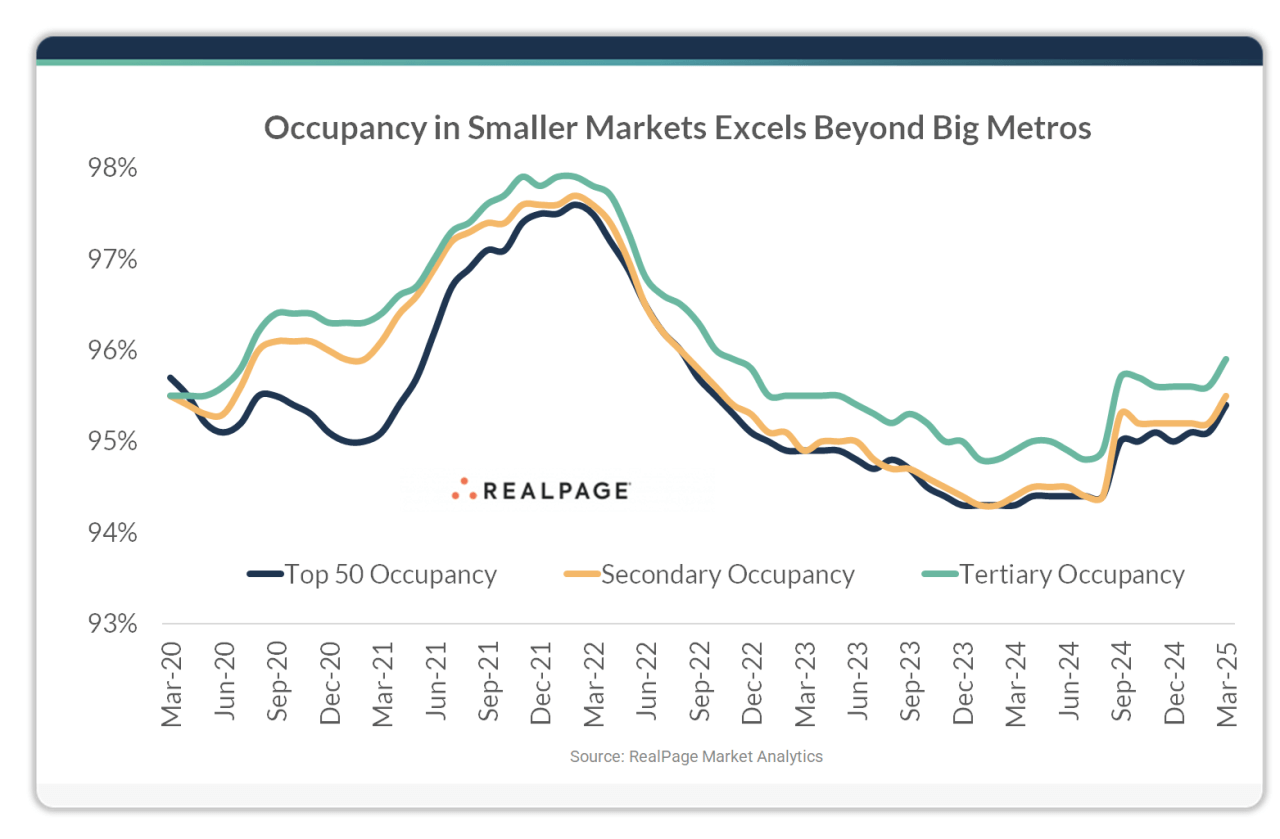Population Growth Buoys Apartment Occupancy in Smaller Markets

Smaller markets have seen big gains in population since the start of the COVID-19 pandemic. At the same time, these markets have posted apartment occupancy rates above their larger market peers, in a general reversal of historic trends.
Population gains were significant in 2021 and 2022 in markets with less than one million residents, according to U.S. Census Bureau data tabulated by the Joint Center for Housing Studies of Harvard University. Meanwhile, the urban areas of larger markets with at least one million residents saw deep population declines in that same time period.

Apartment occupancy in these smaller markets also increased notably during that time frame, at least partially inspired by resident gains. This goes against typical historical patterns, which show the nation’s largest 50 apartment markets ranking ahead of smaller metros for occupancy.

Occupancy rates among the nation’s largest 50 apartment markets averaged at 95.4% in March 2025. These are markets with an existing apartment inventory of around 110,000 units or more. Secondary markets – with about 25,000 units to 100,000 units – were 95.5% occupied, while tertiary markets, with less than 25,000 units, were tightest, with occupancy at 95.9%.
In the five years leading up to the pandemic, that pattern was reversed. Occupancy in the biggest 50 apartment markets averaged at 95.4% (the same as it was in March 2025). In secondary markets, occupancy was a bit lower at 95.1% in the 2015 through 2019 time frame. And tertiary markets logged the lowest occupancy reading at 94.6%.
After most markets nationwide saw fluctuations, with occupancy rates peaking in 2022 before diving again in 2023, smaller markets have come out ahead in the years since as rates have leveled off.






